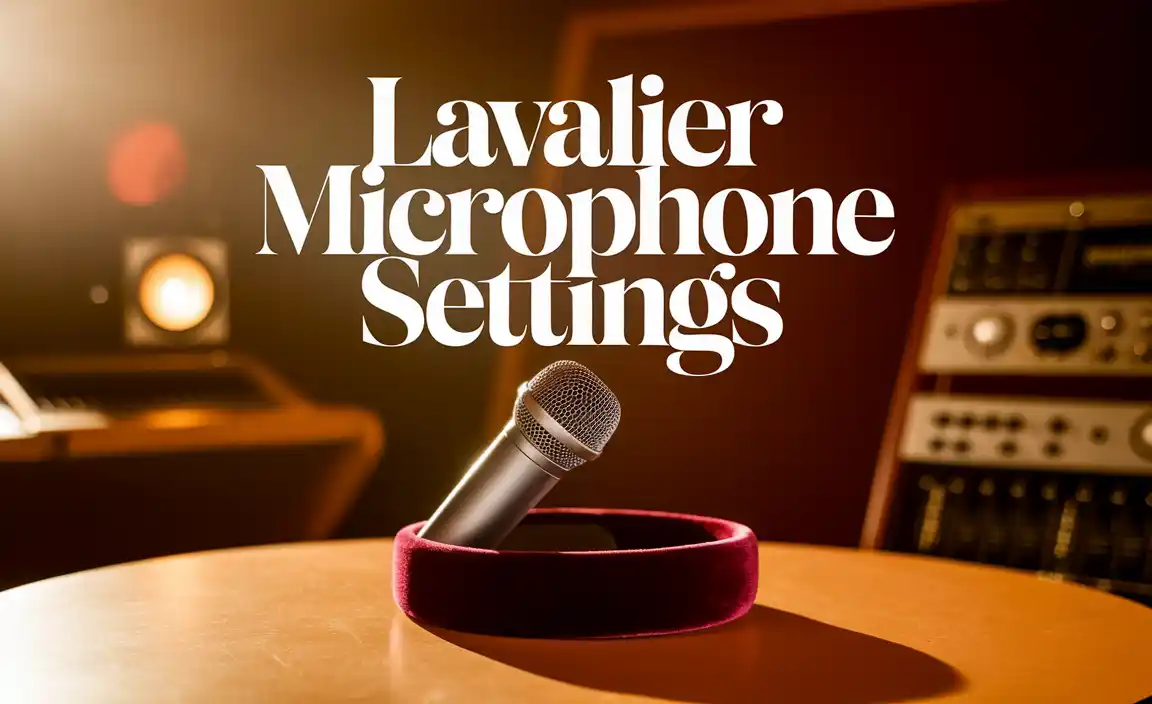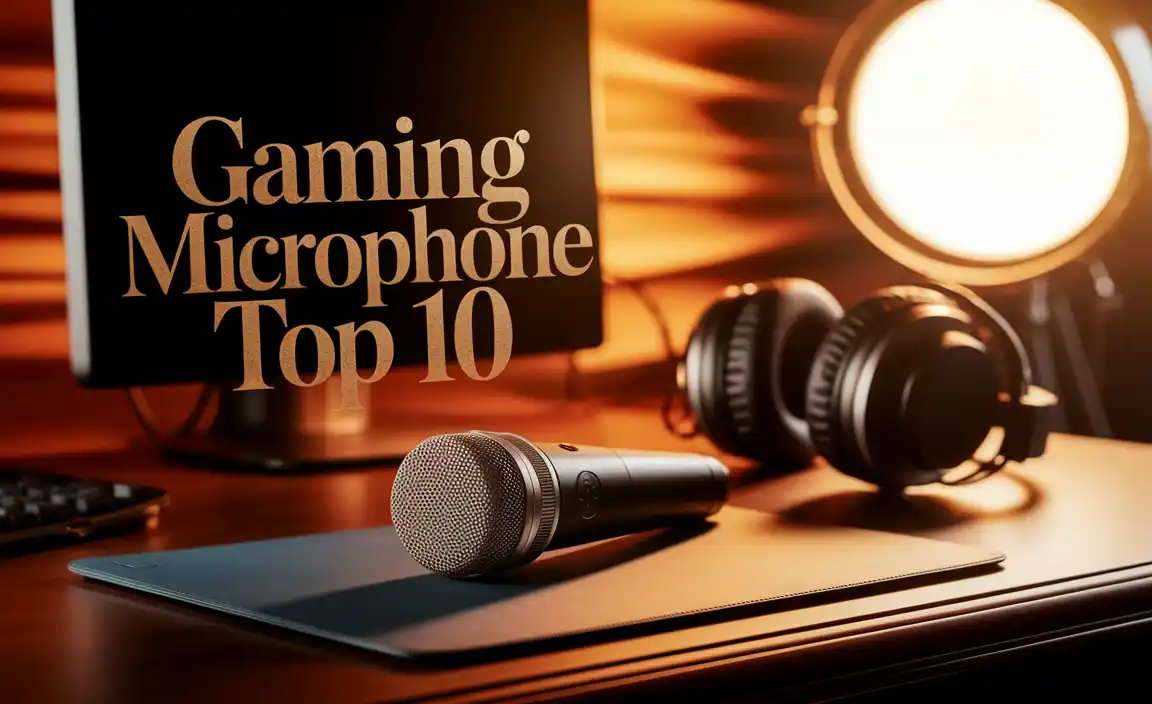Quick Summary:
Choosing the right screen size remote control means matching its size and button layout to your hand, typical viewing distance, and the complexity of your devices. Bigger isn’t always better; focus on comfort, clarity, and ease of use for a frustration-free entertainment experience.
Ever stare at your TV remote, overwhelmed by buttons or struggling to find the right one in the dim light? You’re not alone! Picking the right screen size isn’t just about the TV; it’s also about the remote that controls it. A remote that’s too small can be fiddly, while one that’s too large might feel clumsy or hard to navigate. This guide is here to help you find that perfect remote – the one that feels just right in your hand and makes controlling your entertainment a breeze. We’ll walk through everything you need to know, step by step, so you can finally say goodbye to remote control frustration.
Why Remote Size Matters For Your Entertainment Hub
Think about how often you use your remote. It’s probably one of the most touched devices in your living room! The size and design of your remote control have a big impact on your overall viewing experience. A well-chosen remote can make navigating menus, changing channels, and adjusting volume simple and intuitive. Conversely, a poorly sized or designed remote can lead to fumbling, accidental button presses, and a general sense of annoyance. It’s not just about aesthetics; it’s about ergonomics and practicality. The right remote should feel like an natural extension of your hand, not a tiny gadget you’re trying to wrangle or a bulky brick you can barely grip.
Understanding Remote Types and Their Screen Size Implications
Not all remotes are created equal. They come in various shapes, sizes, and functional designs, often influenced by the type of screen or system they’re meant to control. Let’s break down some common types:
Standard TV Remotes
These are the remotes that usually come bundled with your TV. They typically have a moderate size, designed to fit comfortably in an average adult hand. Their button layouts are often straightforward, focusing on essential functions like power, volume, channel up/down, number pads, and navigation arrows. For most users, these work well if the screen itself isn’t excessively large, and the system isn’t overly complex. However, some can still feel a bit cluttered.
Streaming Device Remotes
Remotes for devices like Apple TV, Roku, or Amazon Fire TV sticks tend to be smaller and more minimalist. They often feature fewer buttons, relying on touchpads or directional pads for navigation. Their smaller size is convenient for portability and a sleek look, but the limited buttons can be a hurdle for those who prefer dedicated keys for every function. Their compact nature means they are sometimes easier to misplace, but they also fit easily in smaller hands.
Universal Remotes
These are designed to control multiple devices, often leading to a larger number of buttons to accommodate various functions and brands. The size can vary greatly, from compact models to larger, more comprehensive controllers. When choosing a universal remote, the “screen size” consideration extends to how many devices you need to manage and how easily you can access those specific controls without getting lost in a sea of buttons.
Gaming Console Controllers (with Remote-like Functions)
While not traditional remotes, some gaming controllers offer media playback and navigation capabilities for their respective consoles. Their ergonomic designs are built for long gaming sessions but can be a bit bulky for casual TV browsing. The size is significant, but the button placement is usually logical for gaming, which translates reasonably well to navigating menus.
Smart Home Hub Remotes
These are less common, as voice commands and apps often take precedence. However, when they exist, they might be smaller, gesture-based, or tablet-like, designed for interacting with smart lighting, thermostats, or other connected devices. Their interaction style often dictates their size and button layout.
Key Factors to Consider When Choosing Your Remote
Selecting the right remote control can feel like a balancing act. You want something that’s easy to use, fits your needs, and doesn’t add to the clutter. Here are the most important things to think about:
1. Hand Size and Grip Comfort
This is perhaps the most personal factor. A remote that feels perfect for someone with large hands might be awkward for someone with smaller hands, and vice versa.
- Ergonomics: Look for a remote with a shape that naturally fits the curve of your palm. Contoured designs or those with textured grips can prevent slipping and provide a secure hold.
- Button Placement: Important buttons like power, volume, and mute should be easily accessible without having to stretch your thumb too far or adjust your grip significantly.
- Weight: A remote that’s too heavy can feel tiring to hold, while one that’s too light might feel cheap or insubstantial. Most remotes fall within a comfortable weight range, but it’s worth noting if you have specific needs.
2. Viewing Distance
How far away do you usually sit from your screen? This impacts how large the remote needs to be and, more importantly, how readable its labels are.
- Large Screens & Long Distances: If you have a big TV and sit far away, you’ll want a remote with larger buttons and clear, legible text. This makes it easier to identify and press the correct buttons without having to get up and inspect the remote closely. A slightly larger remote might actually be better here.
- Small Screens & Close Distances: For smaller screens or if you sit close, button size and text clarity might be less critical. You might even prefer a more compact remote.
3. Number of Buttons and Complexity
This relates directly to the devices you need to control.
Simple Needs: If you primarily use your TV for basic viewing and maybe a streaming stick, a minimalist remote with fewer buttons is ideal. It’s less confusing and easier to operate.
Complex Needs: If you manage a home theater system with a receiver, Blu-ray player, soundbar, and streaming device, you’ll need a more capable remote. Universal remotes are great here, but you need to ensure its layout is logical and allows for easy switching between devices.
- Button Functions: Are there dedicated buttons for everything you need (e.g., playback controls, menu, input selection)? Or are many functions accessed via menus or a shift key?
- Programmability: For universal remotes, consider how easy it is to program and customize button functions.
4. Button Type and Feedback
The feel of the buttons can significantly enhance or detract from the user experience.
- Tactile Buttons: These provide a satisfying click or press, letting you know you’ve activated the button. They are often easier to use without looking.
- Membrane/Soft Buttons: Softer buttons can be quieter but might require a firmer press and can sometimes feel less precise.
- Touchpads/Scroll Wheels: Common on streaming remotes, these offer a different way to navigate. They can be very fast but may have a learning curve and can sometimes be prone to accidental swipes.
- Backlighting: Essential for dark room viewing. Remotes with backlit buttons make it easy to see what you’re doing without turning on extra lights.
5. Power Source
Consider how the remote is powered.
- AAA/AA Batteries: The most common. Easy to replace, but you’ll need spares on hand.
- Rechargeable Batteries: Many modern remotes have built-in rechargeable batteries, often charged via USB-C. This is convenient and eco-friendly but means the remote is unusable if its battery dies unexpectedly unless you have a compatible charging cable nearby.
The Relationship Between TV Screen Size and Remote Control
While there’s no strict rule saying a 75-inch TV must have a gigantic remote, there’s a natural correlation that impacts usability. For larger screens, users often sit further away, making button legibility and tactile feedback more crucial. Moreover, larger TVs frequently come with more advanced smart features, meaning the remote might need to handle more complex navigation through menus, apps, and settings.
Think of it this way: a small, minimalist remote might be perfect for a 32-inch smart TV in a bedroom where you’re sitting close and only using a couple of apps. However, for a 65-inch OLED in a living room used by the whole family, a remote with clearly marked, perhaps slightly larger buttons, and good ergonomics for comfortable couch use, would likely be a better choice. Some high-end TVs even offer two remotes: a simpler one for daily use and a more complex one for advanced settings.
Practical Steps to Choosing Your Ideal Remote
Ready to find the perfect clicker? Follow these steps:
- Assess Your Current Setup: List all the devices you want your remote to control (TV, soundbar, streaming box, etc.). Note down the features you use most frequently.
- Consider Your Environment: How far do you usually sit from the screen? Is your room often dark when you watch? This helps determine the importance of button size, text clarity, and backlighting.
- Test in Person (If Possible): The best way to know if a remote is right for you is to hold it. Visit an electronics store and see how different remotes feel in your hand. Try pressing some buttons.
- Read Reviews: Look for reviews that specifically mention ergonomics, button feel, and ease of use, especially from people who might have similar hand sizes or grip preferences to you.
- Prioritize Essential Functions: Ensure the remote has easy access to the buttons you use constantly. For example, if you frequently switch inputs, make sure the input button is prominent.
- Think About Simplicity vs. Power: Do you want a “set it and forget it” remote, or do you need one with advanced customization and control over many devices?
- Check Compatibility: If you’re buying a universal remote or a replacement, always check the compatibility list or consult the manufacturer to ensure it will work with all your devices. Reputable sources like the Federal Communications Commission (FCC) provide information on device compliance, which can indirectly point to supported technologies.
Remote Control Sizes: A Quick Comparison Table
While exact dimensions vary, this table gives you a general idea of size categories and what they might imply for a remote control.
| Remote Category | Typical Size Range (Approximate) | Best Suited For | Key Considerations |
|---|---|---|---|
| Compact/Minimalist | 3-5 inches long, 1-1.5 inches wide | Streaming sticks, simple smart TVs, small screens, travel | Fewer buttons, may have touchpads, easy to lose, good for small hands |
| Standard/Ergonomic | 6-7 inches long, 2-2.5 inches wide | Most TVs, everyday use, average hand sizes | Balanced button layout, comfortable grip, good clarity |
| Full-Featured/Universal | 7-9 inches long, 2.5-3 inches wide | Home theater systems, multiple devices, larger hands | Many buttons, can be complex, requires good organização, excellent for controlling everything |
Advanced Features to Look For
Beyond basic size and button count, some advanced features can elevate your remote control experience:
Voice Control
Many modern remotes integrate voice control, allowing you to search for content, change channels, or adjust settings by speaking. This can be a lifesaver for larger screens or when you can’t find the specific button you need. It also bypasses the need for tiny, hard-to-read labels.
Gesture Control
Some high-end remotes use motion sensing for navigation, similar to a computer mouse. While innovative, these can have a steep learning curve and might not be for everyone.
Smartphone Integration
Many brands offer companion apps that turn your smartphone into a remote. This is a great backup and often provides more functionality than the physical remote, especially for typing in searches or complex settings. You can find useful information about mobile device standards on sites like the Bluetooth SIG, as many smart remotes utilize this technology for connectivity.
Customizable Macro Buttons
Found on advanced universal remotes, these allow you to program a single button to perform a sequence of actions. For example, one button press could turn on your TV, switch to the correct HDMI input, and open Netflix.
FAQ: Your Remote Control Questions Answered
Q1: Does the HDMI port type affect the remote control size I need?
A1: No, the HDMI port type (like HDMI 2.0 or 2.1) doesn’t directly dictate the physical size of your remote control. Remote size is more about ergonomics and the complexity of the devices it controls.
Q2: Are remotes for curved TVs different in size from those for flat TVs?
A2: Generally, no. The screen’s shape (curved or flat) doesn’t determine the remote’s size. Remote design is more influenced by the TV’s smart features, brand, and intended user experience.
Q3: How do I know if a remote is too small for my hands?
A3: If you find yourself constantly cramping your fingers, struggling to reach buttons, or accidentally pressing multiple buttons at once due to its limited surface area, it’s likely too small for comfortable use.
Q4: Can I use a remote from a different brand, even if it’s the same screen size?
A4: Sometimes, but not reliably. While some basic functions might work if the remotes use similar infrared codes, for full functionality (especially smart TV features), you usually need a remote specifically designed for or compatible with your TV model. Universal remotes are the best option for cross-brand control.
Q5: What’s the best remote size for seniors?
A5: Seniors often benefit from larger remotes with oversized, clearly labeled buttons. Backlighting is also very helpful. The focus should be on legibility and ease of tactile feedback rather than a compact design.
Q6: How important is the weight of a remote control?
A6: Weight is subjective, but a remote that is too heavy can be tiring to hold for extended periods, especially if you’re using it frequently. Conversely, a very light remote might feel cheap. Most standard remotes strike a good balance, but it’s a factor in comfort.
Q7: What if my TV is very large, like 80 inches or more? Should my remote be large too?
A7: With very large screens, you’ll likely be sitting further away. This means legibility of button labels and ease of quick selection are key. A larger remote with a well-spaced, clear button layout is often more practical than a tiny one. Features like voice control become particularly useful at longer distances.
Conclusion: Your Perfect Remote Awaits!
Finding the right screen size remote control is all about finding the right fit for you and your entertainment setup. It’s not just about the technology, but how comfortably and efficiently you can interact with it. By considering your hand size, viewing distance, the complexity of your devices, and the types of buttons that feel best, you can move beyond frustration and embrace a streamlined, enjoyable control experience. Don’t underestimate the power of a good remote – it’s your daily gateway to entertainment. Take a moment to assess your needs, try out a few options if you can, and remember that the “best” remote is the one that feels like a natural extension of your hand. Happy controlling!







